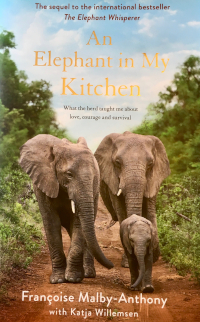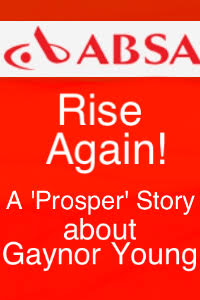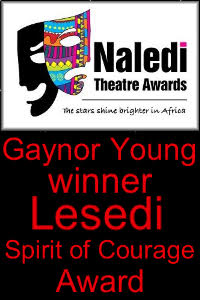 When a man wants to murder a tiger, it’s called sport;
When a man wants to murder a tiger, it’s called sport;
when the tiger wants to murder him it’s called ferocity.
George Bernard Shaw
***
“Did you see the way he licked me on the nose?” she giggled, “It was so rough! He really liked me, Dion. I expected him to break out into ginormous purrs any minute,” she finished laughing.
“Don’t be stupid! He’s a lion cub not a cat.”
“Duh! I’m just saying he really liked me. Yours didn’t lick you,” she finished airily.
“Nah, he had more sense. He was playing tug o’ war with my sleeve.” He laughed. “Wow, he was a strong little fellow.”
“Mum won’t be too impressed with that tear.”
“I won’t tell her. He’s going to be such a great lion when he grows up!” he enthused.
“Yeah, he will be just like Simba in The Lion King.”
Little did these children realise that the cubs that they had been fondling would not be leading the life of The Lion King. On the contrary, they will end their days being sealed off in an enclosed space where people will “hunt” them. These people will then boast to their friends that they have tracked down and shot a lion.
These Lion King cubs were doomed.
Hunting is considered a sport. It is not a sport I approve of or condone. However, the animal has the chance to escape and the hunter must be agile in mind and body to find and kill the animal. Some would say that it is wit against wit. With canned hunting that is not the case. One knows beforehand the location of the animal and the animal cannot escape. I am jumping ahead of myself. Let me start at the beginning.
Canned hunting is a fast-growing business in South Africa. There are more than 160 farms where thousands of lions are being bred to be shot by wealthy foreign trophy-hunters. This barbaric practise is legal! Lions are bred in captivity, hand reared for use in the cub petting industry, then when these tame lions are big enough they are drugged and shot in an enclosure.
These lions deprived of growing up in a natural social group cannot be rehabilitated back to the wild. They are inbred, human-imprinted and psychologically damaged animals, that have absolutely no conservation value whatsoever. They are bred for one reason, and one reason only.
MONEY!
 The canned hunting industry starts with the breeding of lions in captivity. The original parents are poached from the wild where cubs are taken away at birth. Their mothers can then come into season again and be ready to have another litter in six months. In the wild, they would naturally only breed every two to three years. The parents would spend time with their cubs, teaching them how to fend for themselves so that they too are able to live in the wild. In canned hunting this very necessary ritual is done away with. Hunters pay more money for a male lion, therefore female cubs are sometimes killed right after birth. The cubs are hand reared and become part of the ever growing cub petting industry. Hundreds of people are encouraged to fondle and pet the cubs until they are too big to be cuddled by humans. Then they are used as “walking companions”. These lions must walk, whether they want to or not, as often as the business requires. One is allowed to walk with the lion on a lead for a certain amount of money. What a thrill!
The canned hunting industry starts with the breeding of lions in captivity. The original parents are poached from the wild where cubs are taken away at birth. Their mothers can then come into season again and be ready to have another litter in six months. In the wild, they would naturally only breed every two to three years. The parents would spend time with their cubs, teaching them how to fend for themselves so that they too are able to live in the wild. In canned hunting this very necessary ritual is done away with. Hunters pay more money for a male lion, therefore female cubs are sometimes killed right after birth. The cubs are hand reared and become part of the ever growing cub petting industry. Hundreds of people are encouraged to fondle and pet the cubs until they are too big to be cuddled by humans. Then they are used as “walking companions”. These lions must walk, whether they want to or not, as often as the business requires. One is allowed to walk with the lion on a lead for a certain amount of money. What a thrill!
 The condition of the cubs is terrible. Often their hair is falling out. This is a typical result of stress caused by removing them from their mother at such an early age, unnatural nourishment being given to these babies and constant petting. When you indulge in cub petting for the self indulgent purpose of having your photo taken with a cute lion cub, this is what you are doing. Do not believe the blandishments of these lion farms that pose as wildlife sanctuaries. They claim that their lions will not be hunted, will be released back to the wild, will go only to approved facilities that do not hunt, blah blah and bloomin’ well blah!
The condition of the cubs is terrible. Often their hair is falling out. This is a typical result of stress caused by removing them from their mother at such an early age, unnatural nourishment being given to these babies and constant petting. When you indulge in cub petting for the self indulgent purpose of having your photo taken with a cute lion cub, this is what you are doing. Do not believe the blandishments of these lion farms that pose as wildlife sanctuaries. They claim that their lions will not be hunted, will be released back to the wild, will go only to approved facilities that do not hunt, blah blah and bloomin’ well blah!
When the lions get older, and can no longer walk with tourists, they are sent back to the breeders where they will live their lives in miserable camps. The facilities are over crowded and dirty. Here they will endure hopeless, blighted lives waiting for the end, which will be an agonising and painful death.
Finally they reach “huntable” age, and this is when the canned hunting element comes into play. They are let loose into an enclosure where several hunters then quite casually take pot shots at these confused sometimes drugged animals that have nowhere to hide. Our majestic lions have been turned into targets for hunters who take delight in shooting them multiple times with guns and arrows.
Trophy-hunters are attracted by the guarantee of success, and the price: a wild lion shot on a safari in Tanzania may cost £50,000, compared with a £5,000 captive-bred specimen in South Africa.
 Indeed South Africa is prime place for lion canned hunting. I want to weep at that. Glory be, we had so much to be ashamed of during our apartheid era. The shame continues. Only now we have different things to be ashamed of. Canned hunting nears the top of my list.
Indeed South Africa is prime place for lion canned hunting. I want to weep at that. Glory be, we had so much to be ashamed of during our apartheid era. The shame continues. Only now we have different things to be ashamed of. Canned hunting nears the top of my list.
So what can we do to put a stop to this atrocity?
We can write to the S.A. Government to end this industry. All South African conservation authorities emails can be found by clicking here. We can inform tourism agencies in our towns, why they should only send their clients to ethical locations. We must not engage in cub petting. Nor must we engage in lion walking. We must not volunteer to take care of lion cubs. We should seek celebrity action to raise awareness of the South African canned hunting industry. And we must spread the word of what is happening to our wildlife heritage on social media.
As Lisa Marsden so aptly explains: “The African lion is smuggled out of its homeland, destined to become a burger patty, a magic potion, or a floor mat. Harvested in superficial conditions and chopped up and sold for parts, the largest carnivore in Africa–the king of all animals–has gone from being a symbol of strength and bravery to a mere commodity traded amongst humans to the point where it is consumed as an unrecognisable version of itself.”
All photos in this blog are courtesy of The Campaign Against Canned Hunting




















Gaye, this is the most upsetting thing I have read for ages, notwithstanding the doom and gloom in our daily newspapers. Interestingly enough I bought a calendar published by The Campaign Against Canned Hunting at a market in Sedgefield in December. I thought it was a little pricey at the time. Now I am so glad to have made some small contribution to their sterling efforts to stop the cruelty. As we speak I am looking at the beautiful photographs taken by Chris Voets for the calendar. If I see another one, I will buy it for you.Thanks for the enlightenment.
Agreed, Romary, agreed!
Sadly I kiss your eyes
Gaynor
Gaynor, the sad thing is that Mankind considers himself to be ‘Civilized.’
Unfortunately “Barbaric” is more appropriate in so many cases.
Comments are closed.